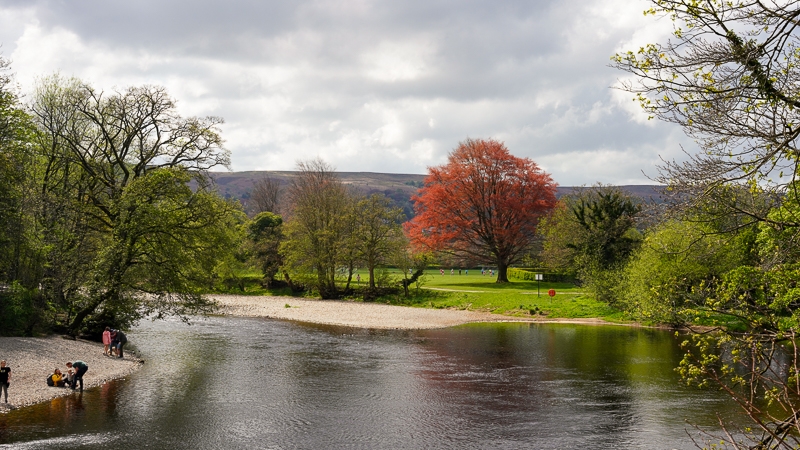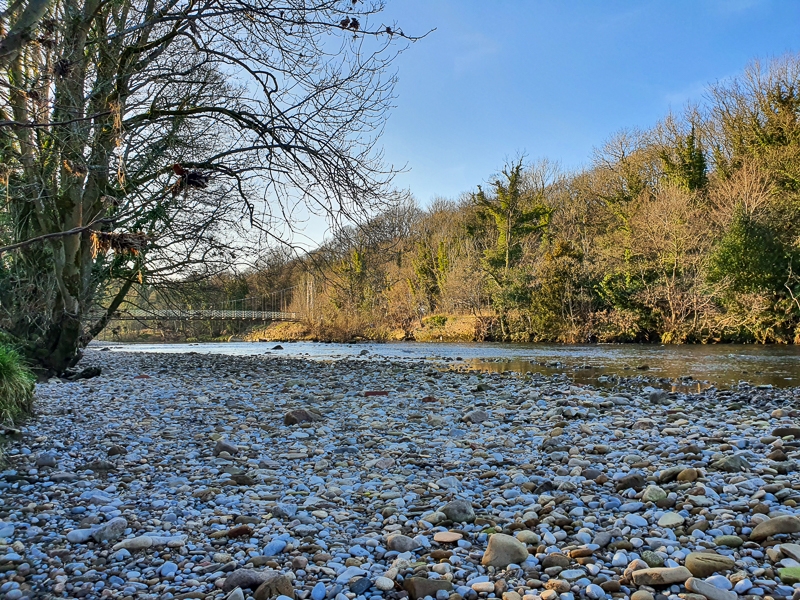WHAT ARE BATHING WATERS, AND ARE THEY ANY GOOD?

The "bathing waters" on the River Wharf
In England, more than 400 areas of water are tested by the Environment Agency (EA) during the "bathing season" (mid-May- end of September) and are designated "bathing waters".
What does this mean? You'd be forgiven for assuming that "bathing status" means an area of water is healthy and safe to swim in, but you'd be wrong.
Ilkley has one of only two stretches of river designated as "bathing water" in England (the other is a stretch of the River Thames in Oxford, and the rest are coastal). On this particular area of the River Wharf, the river opens up and, in the summer, reveals pebble beaches below both banks. It's a very popular swimming spot; for much of the year, the suspension bridge over the water has metal barriers installed to stop people jumping off into the shallow water below.
Ilkley is also blessed with a lido, but on warm summer days the river is as busy as the packed lawns by the swimming pool. Adults go for morning swims, children play here in the day, and teenagers drink and splash around on inflatables.
Curious, then, that signs along the river - including at the bathing site - inform you of the "bathing water" status, only to simultaneously warn that it isn't safe to swim in the river. If "bathing status" doesn't mean "you can bathe here", what does it mean?
Not a lot, it turns out. "Bathing sites" really just designate sites where people bathe and therefore where perfunctory water quality tests are taken. The designation doesn't mean "you can swim here", it means "you swim here, so we test the water".
In reality many of our rivers are bathing spots but none of the others are tested in this way. The tests only start once the area is given bathing status.
The testing consists of 20 tests a year for levels of E. coli (which makes our tummies poorly) and intestinal enterococci (linked to urninary tract infections). The EA then categorises bathing waters as excellent, good, sufficient, or poor.
So, two things to note:
A "bathing waters" designation doesn't necessarily mean water is safe to swim in (it could be rated poor and have high levels of bacteria that cause illness); and
An excellent or good rating for bathing waters does not mean that the water body is healthy, unpolluted, or that it is supporting biodiversity - the tests only check for two specific bacteria which cause a problem for human health, not for other forms of damaging pollution.
Both of the river "bathing waters" were rated poor last year, hence the signs in Ilkley telling you (a) that these are bathing waters and (b) that you should not bathe in them.

The River Wharf
Is there any point in designating "bathing waters", if we don't test for all pollutants and people swim there even if it's rated as poor and therefore unsafe?
One reason it could be helpful is to raise awareness of the polluted state of our rivers. The testing for "bathing waters" doesn't test for key pollutants from agricultural run-off and sewage discharge but signs along the river telling you it isn't safe to swim there are a sure way to get people to notice that the river isn't healthy.
Yorkshire Water is currently installing a new sewer under the A65 in Ilkley which it estimates will reduce storm discharges of sewage into the River Wharf by 40%, and halve the volume of wastewater that is discharged during such events.
In the press release, Ben Roche (Director of Waste Water) directly references the "bathing waters" designation: 'This project forms a major part of our investment in Ilkley following the creation of an inland bathing water on the Wharfe in the town...Water companies have a key role to play, but coordinated action is needed by farmers, the local authority, businesses and local people with the ultimate aim of improving the bathing water classification.'
It sounds like the bathing waters designation was a key driver of positive change for the River Wharf - whether directly, due to increased scrutiny through EA testing, or through resultant pressure from residents (or a combination of the three). Perhaps it isn't useless after all.
Share with your friends
Subscribe to learn more
Join me in exploring our natural world and cultural heritage as we learn how to protect and restore it. Get notified on my latest posts and a monthly newsletter on wider conversation topics for us to chat about.
Recent Posts
If you enjoyed this one, then you might like these too.